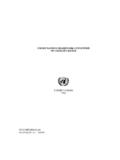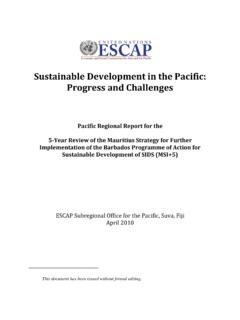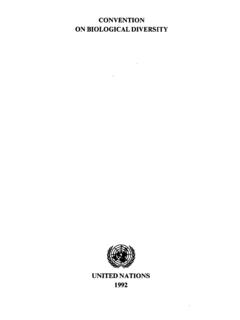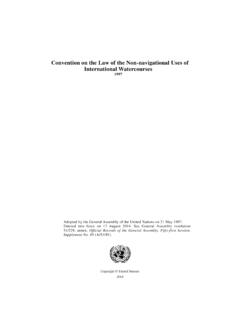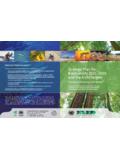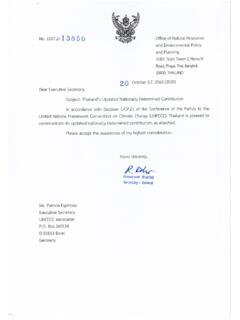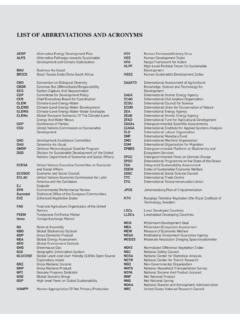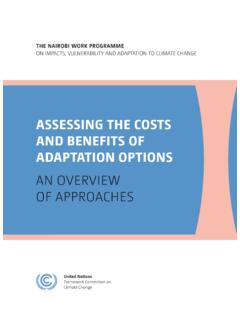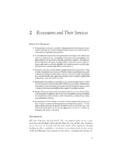Transcription of THE RED DATA BOOK OF THE MAMMALS - Regional Red List
1 Summary: Red Data Book of South African MAMMALS : A conservation Assessment 1 THE RED DATA BOOK OF THE MAMMALS OFSOUTH AFRICA: A conservation ASSESSMENT INTRODUCTION South Africa has been ranked the third most biologically diverse country on Earth based on an index of species diversity and endemism, and is one of 12 megadiverse countries which collectively contain more than two-thirds of global biodiversity (World conservation Monitoring Centre, 1992). Located at the southern extremity of Africa, South Africa has a total land surface area of 1 219 912 km2 and the national territory includes the sub-Atlantic Marion and Prince Edward islands. Despite the majority of the country being semi-arid to arid with an average national rainfall of 500mm (DEAT, 1999, cited in Rossouw et al.)
2 2003), South Africa is host to a wide variety of ecosystems. Agriculture is the dominant land use, contributing about to the Gross Domestic Product and urban areas comprise approximately of the land. In 2001, million people lived in South Africa. South Africa is a signatory to, among others, the RAMSAR convention on Wetland conservation , the convention on International Trade in Endangered Species (CITES) and ratified the convention on Biological Diversity (CBD) in 1995. This convention , originating at the 1992 Earth Summit in Rio de Janeiro, put biodiversity conservation onto the political agenda of participating countries, and is today the most signed up international treaty with 187 countries as parties.
3 As host to the 2002 World Summit on Sustainable Development and the 2003 World Parks Congress, South Africa has expanded its role as a global participant in furthering the cause for species and ecosystems conservation . The promulgation of our National Environmental Management Biodiversity Bill is further evidence of South Africa s intention to identify, inventorise and conserve our invaluable natural heritage, and the right of every individual to a healthy, well protected and ecologically sustainable environment is enshrined in the Constitution of South Africa (Act 108 of 1996). A primary objective of the CBD is to document and highlight potential and realised global biodiversity losses at the level of genes, species and ecosystems.
4 Specifically, the convention refers to a country s obligation to: Article 7: Identify components of biological diversity important for .. conservation and sustainable use .. and Maintain and organise, by any mechanism, data derived from identification and monitoring activities pursuant to .. biodiversity .. conservation .. A comprehensive, scientifically-sound publication providing updated information on the status of South African MAMMALS was identified by the local conservation community as a critical step towards setting conservation and management priorities, identifying threatened species and their habitats and ensuring more effective conservation and management of species and their habitats.
5 Furthermore, it contributes towards creating an increased awareness of critical conservation issues and threats, directing conservation action towards species in greatest danger of extinction and encouraging improved collaboration and resource utilisation. Ultimately, as an index of the state of biodiversity loss in South Africa, it has the potential to become an invaluable tool measuring the success or failure of our conservation programmes. IUCN (World conservation Union) Red Data Books explicitly document and highlight biodiversity losses at the species level and are important tools for guiding the conservation activities of governments and conservation organisations.
6 Red Data Books are furthermore widely recognised as the most comprehensive, apolitical evaluation of the conservation status of plant and animal species as well as measures of the success or failure of various conservation initiatives. Several species in fact, owe their continued existence or improvement in fortunes to the attention they have received as a result of appearing on these lists (Barnes, 2000). The previous South African Red Data Book for MAMMALS was published in 1986 (Smithers, 1986) and covered terrestrial MAMMALS only. Since this publication, South Africa has experienced changes to its provincial borders, amendments to the taxonomic classification of many species have been made, our knowledge and understanding of species and trends has improved, the tools at our disposal for data accumulation and management have improved immeasurably and the IUCN Red List categories and criteria applied in the process of assessing and assigning threat status to species have changed.
7 Hence the absolute need for a comprehensively updated publication assessing all terrestrial and marine MAMMALS in South Africa. A conservation Assessment and Management Plan (CAMP) is a tool developed by the conservation Breeding Specialist Group (CBSG - of the IUCN s Species Survival Commission - SSC) for strategic conservation planning and the management of species and their habitat. A CAMP is a broad-based, comprehensive and scientifically-sound assessment of the taxonomic groups of a region or country using the IUCN s Red List criteria to categorise the level of threat facing species.
8 As a means of updating the South African Red Data Book for MAMMALS , the CBSG s CAMP process was identified as a comprehensive and scientifically-sound means of assessing species and CBSG Southern Africa, a Regional CBSG Summary: Red Data Book of South African MAMMALS : A conservation Assessment 2network in partnership with the Endangered Wildlife Trust (EWT) coordinated and managed the project. The entire project was sponsored by Vodacom, the National Research Foundation and the Lomas Wildlife Trust. Very importantly, this publication does not simply cover the threatened MAMMALS but includes a conservation assessment for every terrestrial and marine mammal in South Africa.
9 This decision to cover all South African MAMMALS was taken for several important reasons: Firstly, whilst determining which threatened species should be assessed may be relatively easy, there are a number of grey areas where it is not so easy to determine where the line between threatened and not threatened lies. Secondly and perhaps more importantly, for this publication to serve as a useful indicator of biodiversity trends, including allowing trends in species populations and habitat to be effectively tracked, baseline data for every mammal species are essential. Therefore, in assessing all mammal species and developing a baseline dataset for each, future updates of these assessment will provide a means of determining trends, measuring conservation success or failures and identifying areas of biodiversity conservation concern highlighted by trends in both the common as well as the threatened MAMMALS .
10 A total of 295 terrestrial and marine species and subspecies of MAMMALS were reviewed. Species were evaluated within South African borders only, excluding Swaziland and Lesotho. CAMP BACKGROUND In January 2002, almost 90 South African mammal conservationists, biologists and taxonomists were invited to participate in the South African Mammal conservation Assessment and Management Plan (CAMP). Participants collected relevant data on species within their areas of expertise and these data were accumulated in CBSG-developed CAMP taxon datasheets (TDS). Data pertained to species distribution, habitat, population status and trends, breeding and feeding characteristics and included all available references and research findings.
